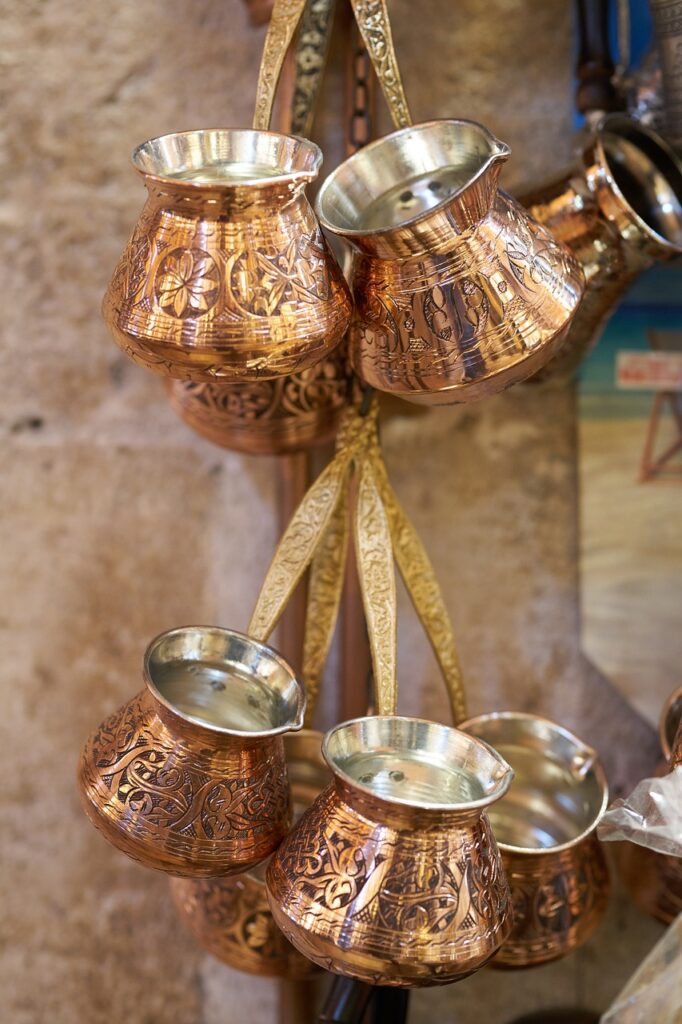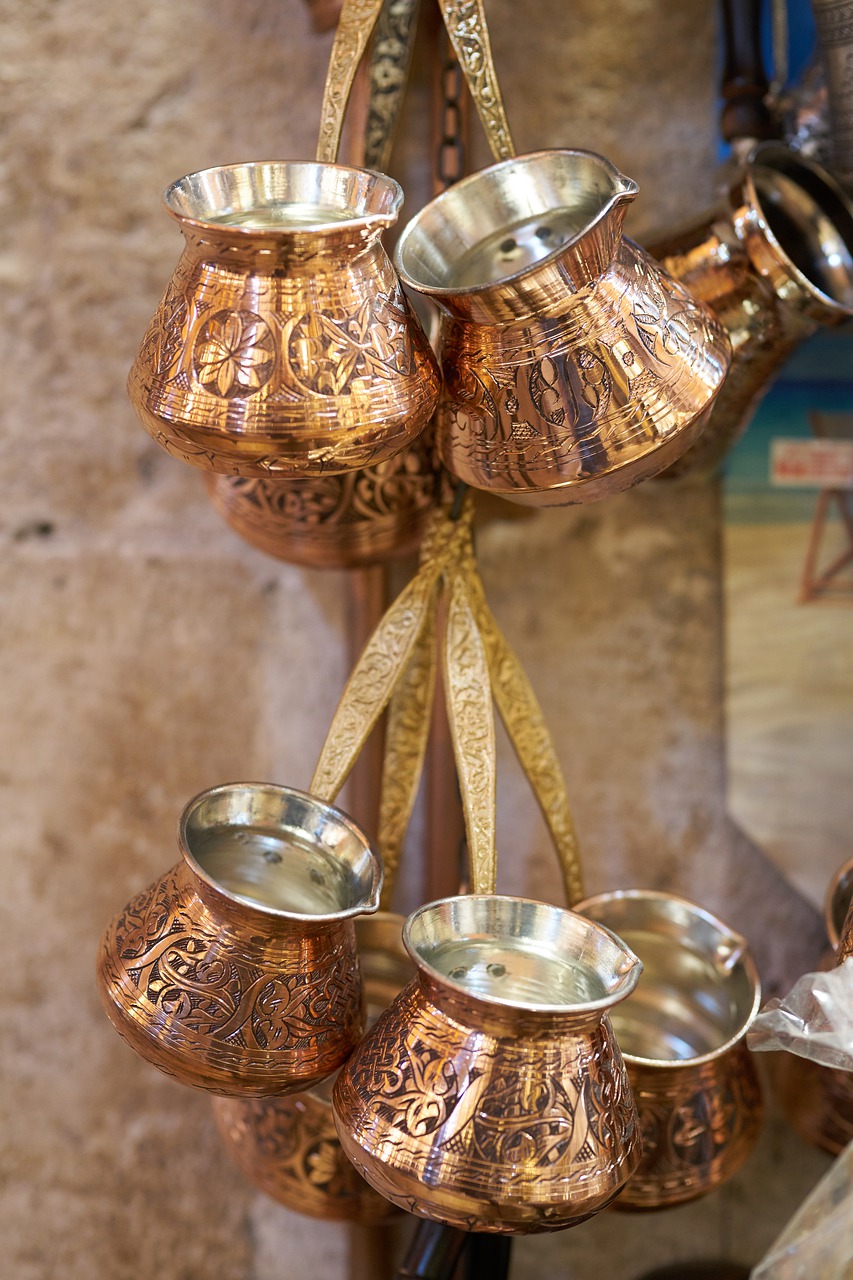By Tamana Jeelani
Kashmiri copperware is more than a product of skilled hands — it is the living voice of the Valley’s cultural memory. For centuries, its shimmering vessels have adorned homes, kitchens, and wedding feasts. Today, however, this ancient craft stands on fragile ground, threatened by machine-made imitations, declining artisan numbers, and changing consumer tastes. The call for preservation has never been louder.
A Legacy Forged in Metal
Copperwork in Kashmir traces its roots to the Persian-influenced Mughal era, when artisans began engraving intricate designs on pots, plates, and samovars. Over time, these objects became woven into the fabric of Kashmiri life. A trami — the copper plate used to serve the famed Wazwan feast — remains incomplete without its fine naqashi patterns. The samovar, a staple for brewing kehwa, carries both ritualistic and everyday value.
Copperware also held emotional weight: daughters carried it in dowry, families passed it on as heirlooms, and ceremonies were incomplete without its presence. These were not just utensils but vessels of memory, identity, and continuity.
The Artisans Behind the Shine
The craft is labor-intensive, demanding weeks of patient hammering, shaping, and engraving. The naqash, typically from the Khar community, painstakingly carves floral or calligraphic motifs by hand — a skill usually inherited through childhood apprenticeships.
Each piece bears the mark of its maker. Slight asymmetry, minor imperfections, and uneven inscriptions distinguish authenticity from mechanical replication. The result is not just a utensil but a work of living art.
Yet, despite this dedication, the number of skilled artisans is dwindling. According to official figures, Kashmir had nearly 7,000 registered copper artisans in the early 2000s, but fewer than 2,500 remain active today. Many have abandoned the craft due to poor earnings and shrinking demand.
An Industry Under Siege
Markets across India and abroad are flooded with cheaper, mass-produced wares from cities such as Moradabad. These machine-stamped products mimic Kashmiri designs but lack the depth, warmth, and individuality of handmade copperware. Sold at lower prices, they distort market value and push genuine artisans into obscurity.

The problem is compounded by mislabelling. Many machine-made products are falsely marketed as “Kashmiri copperware,” eroding consumer trust. As one artisan in Srinagar’s Zaina Kadal area lamented, “We work for weeks, and still our product struggles to compete with a factory piece made in hours.”
Authenticity in the Age of Imitation
Identifying genuine Kashmiri copperware is a challenge for buyers. True pieces are heavy, with reddish-golden hues and delicate hand-carved flaws that speak of human craftsmanship. Fakes, in contrast, are lighter, glossier, and mechanically uniform.
Experts argue that stronger measures are required — including Geographical Indication (GI) tagging, certification of authenticity, and consumer awareness drives. Similar protections revived Banarasi silk and Pashmina shawls; copperware, too, could benefit from such recognition.
Health and Heritage in Harmony
Beyond its artistry, copperware continues to serve a practical and even medical purpose. Ayurveda texts recommend drinking water stored in copper vessels to balance the body’s doshas and improve digestion. Many Kashmiri households still follow the practice, valuing it as much for health as for heritage.
From festive weddings to quiet morning teas, copperware remains a silent participant in Kashmiri life, bridging tradition with everyday utility.
Reviving the Dying Flame
Preservation, experts argue, cannot be left to artisans alone. Consumers, educators, and policymakers must play their role. Exhibitions, artisan workshops, and cultural tours can introduce younger generations to the craft. Social media storytelling has already helped some artisans reach global buyers directly.
Government efforts also matter. The Jammu and Kashmir Handicrafts Department, along with NGOs, has been trying to revive copperwork by offering training schemes and marketing support. The Government Arts Emporium at Kashmir Haat in Srinagar regularly features authentic copperware, giving artisans a platform alongside carpets, shawls, and papier-mâché.
However, stakeholders insist that more needs to be done. Export tie-ups, artisan cooperatives, and integration with tourism could provide artisans both recognition and revenue. Live demonstrations in craft villages, heritage museums, and even collaborations with global décor brands may open new doors.
Lessons From Other Crafts
There are successful models to emulate. Banarasi weavers fought back decline through branding and GI tagging. Pashmina gained global attention via narrative campaigns linking its fabric to Kashmiri identity. Copperware too can adopt similar strategies — from craft fairs and films to artist-in-residence programs that connect tradition with modern markets.
A Cultural Call to Action
Copperware Kashmir is not merely a craft — it is a source of pride and identity of our culture. Our great ancestors shaped not only bronze but also memories and traditions. Its survival depends on our choices.
That choice today lies with us: whether to let machine imitations overshadow centuries of artistry, or to support genuine craftsmanship that carries the soul of Kashmir.
In an era of globalization, where homogenization often threatens the unique, Kashmiri copperware stands as a shimmering reminder of individuality, continuity, and cultural resilience. Its survival will depend on collective will — from artisans keeping faith in their chisels to consumers recognizing the value of heritage.
For now, every engraved samovar and trami holds not just tea or food, but also the story of a people and their timeless bond with art.
The views expressed in this article are solely those of the author and do not necessarily reflect the opinions or views of this newspaper. The author can be reached at [email protected]
